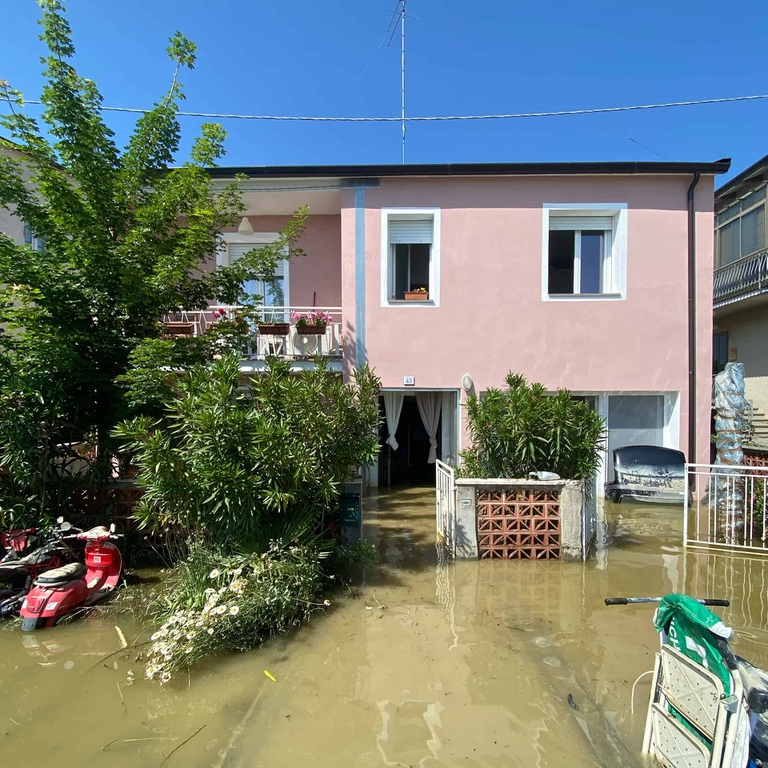https://www.lifegate.it/temperature-ispra-arpa-2023
- |
- For the tenth consecutive year, temperatures in Italy in 2023 were higher than the historical average.
- In particular, minimum temperatures recorded an anomaly of 1.2°C, an absolute record.
- Compared to 2022 it rained more, but the violent and sudden rain created devastating floods, and the drought is less severe, except in Sicily and some areas of Calabria and Sardinia.
For the tenth consecutive year, temperatures in Italy in 2023 were higher than the historical average, but this time with an absolute record of +1.2 degrees Celsius (°C) of anomaly with respect to the minimums.Precipitation was also below average levels, although increasing compared to the previous year, and this influenced the drought issue, which in 2023 was less serious than in 2022, although with serious problems recorded at a local level, particularly in Sicily and in part of Ionian Calabria.The data from the new report National system for environmental protection, composed of the regional Ispra and Arpa, "The climate in Italy in 2023" allows us to characterize the country's climate, distinguishing well between well-established trends, such as that of the increase in temperatures, and annual fluctuations also due in part to contingent meteorological conditions , like the tail end of precipitation in the past year.
Temperatures in Italy increasingly higher
The most striking fact at first glance is that they have never been so high in Italy the minimum temperatures daily: +1.20°C the anomaly recorded in 2023, the highest in the historical series.And while the values of the lowest ones rise, last year was the second, with aanomaly of +1.14°C, for average temperatures compared to the climatological value of the period 1991-2020, after the record of +1.23°C in 2022.Overall, 2023 is the tenth consecutive year with a positive anomaly compared to the average. October it was the relatively warmest month: with a impressive +3.27°C above the climatological value it marked the highest point of its monthly series since 1961.Marked anomalies above +2°C were also recorded in July and September.
In the summer, Italy was hit by intense heat waves, with temperatures of 48.2°C recorded on 24 July in Jerzu and Lotzorai, in south-eastern Sardinia, the absolute maximum ever recorded in Sardinia, 0.6°C lower than the European record of 48.8°C recorded in Syracuse on 11 August 2021.Similarly to the air temperature, the surface temperature of the Italian seas in 2023 ranks second in the historical series, with an anomaly of +0.9°C compared to the 1991-2020 climatological average.
At least the rainfall is picking up, but…
After the serious deficit in 2022 (–22 percent of rainfall), the cumulative annual rainfall in Italy in 2023 is almost average with “only” -4 percent compared to the period 1991-2020:in short, there is no need to remain calm anyway.Also because the rain was not constant, far from it:there was a prevalence of monthly negative anomalies during the year, persisting from July to December in the South and Islands, while the rainiest months such as May (+143 percent) And June (+77 percent) they recorded rains that were too intense and copious to be easily absorbed by the often dry and uneven soil.

And in fact in the months in question the floods that hit central Italy were particularly disastrous:we remember the one in May central-eastern territories of Emilia-Romagna, which caused 17 deaths, exceptional floods, thousands of landslides and very serious and widespread damage throughout the territory.And then that of November 2nd in Tuscany, with strong storms they recorded exceptional quantities of rain, with maximum cumulative amounts of up to 180-200 mm in 3 hours in the northern areas of the provinces of Pisa and Livorno, flooding which affected important commercial areas and many residential areas and caused eight victims.The exceptional rainfall in Emilia-Romagna and Tuscany, such as the particularly low rainfall in Sicily and part of Ionian Calabria, is emblematic of aextremization of the Mediterranean climate.
Drought is always just around the corner
Drought and the resulting water severity problems continued to affect Italy during 2023, although in a different way compared to the critical situation encountered in 2022, the report says The climate in Italy in 2023.In fact, after the historic minimum of water resources recorded in 2022, i.e. 67 billion cubic meters - approximately half the average value of the thirty climatological period 1991-2020 - the availability of natural water resources is recovering in Italy in 2023, estimated at 112.4 billion cubic meters.Which still equates to an availability of water resources that is still 16 percent lower than the 1991-2020 average value.
In particular, the territories of northern and central Italy in the first four months of the year they were characterized by severe and extreme drought situations which began to ease during 2023.In the last three months of the year, which are generally the wettest, there was, in particular, Sicily and in part of Ionian Calabria, but also in Sardinia, a significant deficit of precipitation, which led to a condition of extreme drought.Which in many cases, and in particular in Sicily, still persists now, when we have already passed the first part of 2024.
